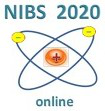Speaker
Description
Many types of negative hydrogen (H$^-$) ion sources are operated by injecting cesium (Cs) into the discharge. The injected Cs reduces the surface work function of the extraction electrode to enhance negative ion current and reduce coextracted electron current. The high H$^-$ ion density in the vicinity of the beam extraction hole is believed to be realized by negative ionization of incoming flux to the electrode including atomic hydrogen (H$^0$) produced from the ion source discharge. The production efficiency of this surface produced H$^-$ ion component should be highly dependent upon the velocity distribution of H$^0$ atoms striking the extraction electrode. A system to measure the change in the H$^0$ velocity distribution functions depending upon the method to excite the plasma has been designed, built and being improved the performance.
The system equips a rotating blade neutral beam chopper to modulate the intensity of the neutral flux passing through the skimmer that separates the downstream chamber for time of flight analysis from the ion source discharge. After about 45 cm free flying vacuum space an electron impact type ionizer converts neutral particles to ions. A magnetic deflection type mass separator guides the produced protons to a secondary electron multiplier detector. The system exhibits the existence of a high-speed component in the H$^0$ velocity distribution when it was tested with an ECR plasma source. The current problem is the detector life that limits the signal accumulation. The ion to electron conversion plate degrades rapidly for the positive hydrogen ion impact and reduces the signal pulse height in several hours. The correlation between the discharge power and the observed time-of-flight spectrum is discussed.

